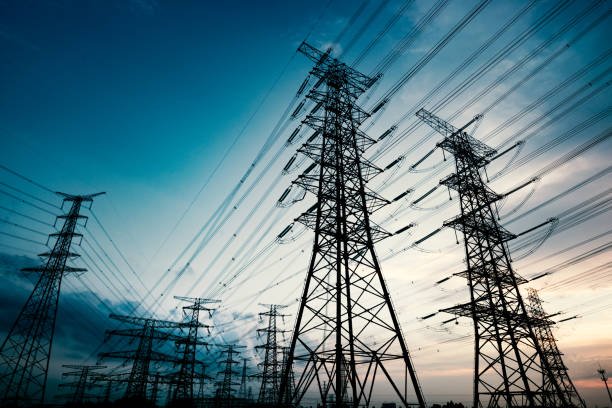Despite the N700 billion and another N600 billion intervention fund to ameliorate the liquidity crisis plaguing the power sector, it is still in murky waters. Along the power value chain we find that gas Generating Companies (GenCos) are unable to pay their suppliers and are currently facing liquidation threats as a result of huge indebtedness to banks and financiers. The GenCos under the Power Purchase Agreement (PPA) are to generate and sell electricity to the Nigeria Bulk Electricity Trading (NBET/Bulk Trader) company who in turn offtake to the DisCos then consumers who are to pay in full for this electricity. Sadly, NBET has been unable to realise full payment from the DisCos to pay the GenCos thereby leading to several breaches of contractual obligations and severe illiquidity in the sector.
On the other hand the Transmission Company of Nigeria (TCN) which is responsible for transmitting generated power to the grid are severely challenged as the national grid is incapable of taking all the electricity being generated due to aging infrastructure and limited expansion. Lastly, the Distribution Companies (DisCos) who are unable to recover invoices in some locations, are said to be under-collecting or under-remitting payments for electricity supplied due to theft, illegal connections, inaccurate reading of electricity consumed, threat of violence by consumers, refusal to pay for electricity consumed and other related factors but this becomes part of the primary cause of the shortfall leading to GenCos being short-paid This is by no means the exhaustive list of the attendant challenges afflicting the on-grid sector but rather a synopsis of what each tier is facing primarily.
Due to the grid lock in the on-grid sector, the Federal Government of Nigeria (FGN) is turning towards renewable energy and off-grid solutions to meet the energy demands of its population. There are a number of grants and funding from Development Financial Institutions (DFIs) geared towards promoting off grid solutions either through solar energy and more recently mini grids in unserved and underserved areas.
The NERC Mini-Grid Regulations 2016 was adopted in 2017 and is the first legal and regulatory framework for all mini-grids in Nigeria. In simple terms mini-grids are systems that generate and supply electricity (between 0kW to 1MW) to several customers and are able to operate independently (isolated) or when connected to a distribution network (interconnected). These are made to serve electricity majorly to the population in rural areas where the grid has not been extended to and thus do not have any distribution network (unserved) and or areas where the grid and distribution infrastructure are present but are not functional (underserved).
Mini-grids that are isolated and less than 100kW are to be registered but there is no obligation to apply for a permit while mini-grids producing more than 100kW to 1MW are mandated to get a permit. A permit however goes with compensation in the event that the grid extends to the project site of the developer and the DisCo builds its distribution network which is why most investors will rather apply for a permit even if producing less than 100kW.
Interconnected mini-grid on the other hand are connected to a Distribution Licensees network and deployed in underserved areas. In this case the developer enters into a tripartite agreement with the community and DisCo to construct (or scale up), operate and maintain a mini-grid which will use the distribution infrastructure to supply electricity to the consumers at a cost higher than the tariff charged to those on the grid but lower than the combination of grid supplied power and diesel generator consumption. The tripartite agreement binds all parties and is approved by NERC.
Despite all of the above, the Mini-Grid Regulation has its shortcomings which includes the rigorous process of applying for a permit with NERC including entering into a tripartite agreement with the community and DisCo, ensuring that the DisCo does not plan to extend its network to the developers project site within 5-10 years or risk transferring all its asset to the DisCo in return for compensation or converting to an interconnected mini-grid and the cost of setting up Mini-Grid technology and willingness of customers to pay more for stable electricity in order to recoup investment.
As mentioned earlier REA has been fundamental in the push for mini-grids and off-grid solutions in Nigeria and are currently set to electrify thousands of homes and business through ongoing DFI projects. Some of these projects include; the Nigeria Electrification Project (NEP) which amongst other things aims to support mini-grids in unserved areas and is envisioned to electrify 2.5 million Nigerian households and local enterprises, 7 Federal Universities, 2 Teaching hospitals and 141,638 Nigerian students; the Nigerian Energy Support Programme running the Mini-grid Acceleration Scheme (MAS) focusing on isolated mini grids and Interconnected Mini-grid Acceleration Scheme (IMAS).
The Interconnected Mini-Grid Acceleration Scheme (IMAS) is viewed as the possible bridge between on-grid and off-grid electrification in that it uses both technology in delivering power to underserved areas. Developers may likely not spend as much building a distribution network as this is already in place albeit poor and will only need to upgrade this while installing the mini grid comprised of both solar and diesel generators.
The opinions in the articles are for general information purposes only and do not form a legal relationship or be taken as legal advice. To explore legal advice, please consult your solicitor or feel free to get in touch with us directly.


